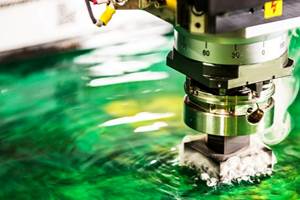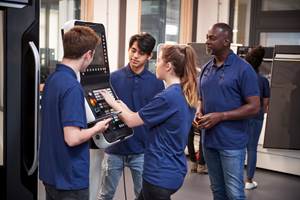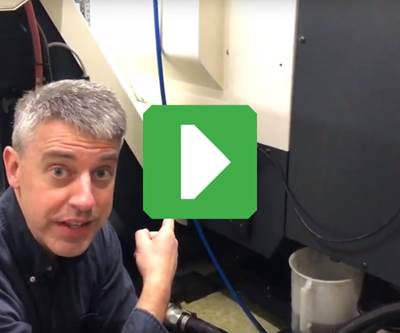Jim Goerges is in the eyeglasses business. He could see from a long way off what was coming.
His shop, Precision Tool Technologies of Brainerd, Minnesota, makes tooling that is used in manufacturing eyeglass lenses. Serving this specialty has enabled the shop to thrive and grow off the ongoing business of two major customers that account for much of its optical-industry business. But more than a decade ago, Mr. Goerges recognized the vulnerability in this. That is, the possibility that these two large customers might one day come together. He saw how logical it would be for them to merge, leaving his shop significantly beholden to just one customer. To prepare for this, he decided that Precision Tool had to diversify.
But what is the right way to do that when business is good and the shop’s current capacity is full? Buying more machines would mean expanding staff and expanding space. Mr. Goerges’ attention would be distracted by the expanded management challenge. Plus, as he says, “A bigger building doesn’t earn us any money.” The new capacity would need to be filled, yet how quickly could he expect new business to come in from altogether new customers?
Precision Tool needed a better way to diversify. It needed a way to increase productive capacity that would entail no additional staffing and no need to change the current floor space. It needed a way to diversify in which the added capacity was free of these sorts of additional costs.
He found the answer—or more accurately, the first part of the answer—when he first considered the possibilities of multitasking CNC lathes, machines capable of turning, milling and drilling all surfaces of a part in a single machining cycle. His production had previously been done on simpler machine tools, but when the time came to upgrade his machines (starting around 2014), he invested in this level of equipment: bar-fed, automated turn-mill machines. More significantly, he also invested in bar-fed five-axis machining centers, which provide a similar level of done-in-one capability. With these machines in place, he began pursuing what he calls “168 machining,” meaning realizing productive output on the machines through all 168 hours in a week, even though the shop is staffed through only one shift, five days per week. The optics-related production was transferred to unattended machining cycles, running lights-out through nights and weekends. Once this was accomplished, the capacity for diversification essentially was free of extra staffing and floor-space cost. While the unattended hours took care of the optics work, the staffed daytime hours were freed for completing other jobs for other sorts of customers.
The expected merger came last year. As expected, Precision Tool now gets much more of its business from just one big optical-industry customer. The vulnerability has arrived, except it hasn’t played out yet. The optical work is still coming without any change in terms. Meanwhile, within the daylight hours, the shop has begun winning and delivering on the sort of business that will serve it in case the situation with the established work does start to change.
Freeing up the day in this way was not easy. The reason why investing in high-end, automated machine tools was only part of the answer is because successful unattended machining is the result of a system every bit as much as the result of a hardware choice. Completing that system represented perhaps the greatest engineering challenge Precision Tool has faced. It meant not simply solving problem after problem that might arise during production, but something more than that: anticipating and preventing problem after problem that no person would be present to address.
And the hardest challenge of all, the one that nearly kept this shop from freeing up its days, was the challenge posed by coolant.
Feeding 168
Today, Precision Tool’s machines for 168 machining include three CNC lathes with dual opposing spindles and live-tool capability from DMG MORI, one Miyano CNC lathe and two five-axis machining centers from Willemin-Macodel. All these machines are fed work by automated bar feeders from LNS. The Willemin-Macodel machines are unusual for being bar-fed machining centers—it is rare to find such a machine in a U.S. job shop. Mr. Goerges says when Precision Tool’s first of these machines was being built in the machine tool maker’s plant in Switzerland, the other machines being built beside it were marked for major international manufacturers with household names. Precision Tool was the unknown outlier. To have found a place for equipment such as this felt like arriving at a different level of manufacturing.
The feeling didn’t entirely last. What the shop discovered is that its internal systems and procedures had to get better in order to realize the full value of equipment such as this. A high-end automated machine tool is not the destination, but instead the start of a journey. Machines such as these are at best enablers to unattended machining. The shop using them still must determine just how far it can go in successfully producing good parts when employees are not on-site.
A high-end automated machine tool is not the destination, but instead the start of a journey.
Mr. Goerges says, “There are three big issues that stand in the way of machining unattended for hours on end.” Though he calls them big issues, all of them refer to small and mundane details of machining. “One is chips—avoiding long chips that can become entangled or can shorten tool life because of recutting,” he says. “Another is coolant. To try to run all through the weekend, the machine’s coolant levels will drop significantly. Shops usually keep a bucket brigade going to deal with this. What do you do when there are no people with buckets?
“And finally, what do you do about the unexpected problems?” he asks. That is, what does the unattended shop do about the tiny machining problems that potentially become big problems if the machine stops and waits while no employee is present to address the need or error?
This last challenge is being addressed with electronics. A machine-monitoring system from Scytec Consulting is used to generate emails sent to employees when there is an unexpected machine stop. Cameras have been mounted strategically throughout the facility so remote operators can log in from their phones and try to see the cause of the stop—though learning this doesn’t change the fact that someone will likely need to go to the shop to address it. In short, the response to an emergency during machining with no one present is to allow for the possibility that a team member might need to come in briefly. Team member Jared Goerges (son of Jim) lives the closest and is the most likely to respond to these calls. The 168 system is now effective enough that he only made these unplanned visits to the shop a few times in the past year, he says. One time was because of chips building up and the others were because bar feeders ran empty of material.
Meanwhile, the challenge of chips has been solved with programming. For Precision Tool, cost-effective production is not necessarily fast production. Reliable unattended production is more valuable than speed. The shop programs tool paths aimed at generating fine chips that easily fall out of the way. Its chip bins look like they are filled with coarse dust rather than chips.
Yet the shop tried many fixes when it came to coolant and the problem of keeping levels at capacity as machines ran unattended from Friday night to Monday morning. At one point, there was an elaborate system of hoses to each machine, with coolant and water added at timed intervals. There was another plan relying on the use of an indoor sprinkler system. Every approach failed to reliably address the problem, Mr. Goerges says. “Everything we tried just ended in a lot of coolant on the floor.” This challenge alone might have kept the shop from fully realizing 168 machining, he says.
Fittingly enough, when the shop at last did find the answer, the solution it found relied on optics.
Eyeing Coolant Control
Affixed to one wall of the shop now is a controlled and centralized system of valves connected by hoses to each of the CNC machines. All coolant needed during 168 machining now passes through this system, which automatically provides the proper mixture of concentrate and water needed at each machine. A 300-gallon reservoir of concentrate is connected to this system. This solution, with the valve system at its heart, works so well at automatically replenishing coolant that the shop will soon begin marketing the system as a product for other shops. And if the valving and control system is indeed the “heart” of this solution, its eyes are optical sensors at every machine.
An optical liquid-level sensor is the device that enables this coolant-replenishment system to work. Each high-end CNC machine at Precision Tool now has a level sensor staring perpetually at the surface of the coolant in its tank. When the surface level drops too low, the sensor triggers a refill from the central coolant system.
One basic challenge with this system was how to mount the sensor at each machine. No machine tool was designed with the expectation of an external coolant level sensor as one of its accessories. Precision Tool therefore had to customize a bracket to attach to every different machine tool to hold the sensor securely at the proper angle, and every machine is just different enough that a different bracket design was required. 3D printing provided the most efficient way to produce these one-off brackets. The shop’s Fortus 3D printer from Stratasys is an effective resource for custom machine components such as this, as well as custom fixtures and tooling used throughout the shop’s operations. In marketing the coolant system, the shop expects that it might simply provide a CAD file of the bracket to each user, allowing the user to modify this file for its machines and perhaps also obtain the custom bracket through 3D printing.
The coolant system solved the last problem preventing 168 machining. The system’s sensor is key to the solution, and custom brackets are key to effective, reliable sensor operation. Diversification through unattended machining at Precision Tool required sophisticated machine tools to be sure, but in the end, it also required problems to be solved that were as plain as this one, requiring just the right simple touches such as sensors and brackets.
New Day
It would be nice to say the story of Precision Tool’s move toward diversification ends there. In fact, the story now begins. With unattended machining effectively realized, the shop now turns its attention to the challenge of the daytime hours. The regular business hours when staff is present have now been set free, but those daytime hours aren’t many. The standard work day is a relatively brief window of time, and setting up for nighttime and weekend production has to be accomplished within this window as well. Therefore, in order to deliver work efficiently and effectively during the daytime hours, this time has to be used well. Short-run jobs have to be completed and transitioned quickly, and employees have to be able to quickly obtain the resources they need to do their work.
To that end, Mr. Goerges hired Bryen Rohrbach, an industry veteran from much larger Minnesota manufacturer RTI (formerly Remmele Engineering), to oversee the shop’s re-organization—specifically, to re-organize the shop for its work during the daylight hours. Mr. Rohrbach’s efforts so far have involved establishing a tool crib, something Precision Tool didn’t have previously; creating a bin system that quickly identifies and accurately accounts for work in process; and defining and leading the implementation of the procedures the shop will follow as part of its new ISO-certified process. Now that daytime hours have been set free, the shop’s culture is changing in order to use these hours well.
The optical-related machining work is still there. In fact, this work still makes up most of the shop’s business, and might even grow. The journey to diversification is just beginning. And yet, the difference in this shop now, compared to when the optical work made up all its business, is literally night and day.
That is, the night is now different. The night is full of work being run profitably and automatically with no staff in view.
And the day is different, too. The day is getting better organized and more responsive. By day, the shop is getting better prepared to meet the opportunities it is now safe to pursue, because the night work is keeping the lights on.
Related Content
Oelheld Coolant Increases Metal Removal Rates
The odorless coolant is said to offer increased removal rates, lower electrode wear, excellent surface qualities, lower refill quantities and longevity to provide lower overall operating costs.
Read MoreSTLE To Host Metalworking Fluid Management Program
STLE’s program is a two-and-a-half-day education program offering a comprehensive overview of metalworking fluid management.
Read MoreHennig Inc. Acquires Industrial Coolant Systems
ICS develops and field tests high-pressure coolant systems, coolant filtration systems and other machine tool solutions.
Read MoreJorgensen's Coolant Collection System Eliminates Sludge Build-Up
The PermaClean system adds agitation to the coolant collection system or holding tank and prevents particulates from settling.
Read MoreRead Next
Video: 3D-Printed Brackets Are Key to Automated Coolant Delivery for Lights-Out Machining
An on-site look at the different elements of the coolant-delivery system developed by a machine shop committed to running unattended.
Read MoreIn Lights-Out Machining, Part Loading Is Not the Problem — Here is How This Shop Handles Unloading
Correct unloading of the parts affects part quality as well as the capacity of the unattended machining system. Here is more of the experience from our “168” shop.
Read More3 Mistakes That Cause CNC Programs to Fail
Despite enhancements to manufacturing technology, there are still issues today that can cause programs to fail. These failures can cause lost time, scrapped parts, damaged machines and even injured operators.
Read More

.jpg;width=70;height=70;mode=crop)

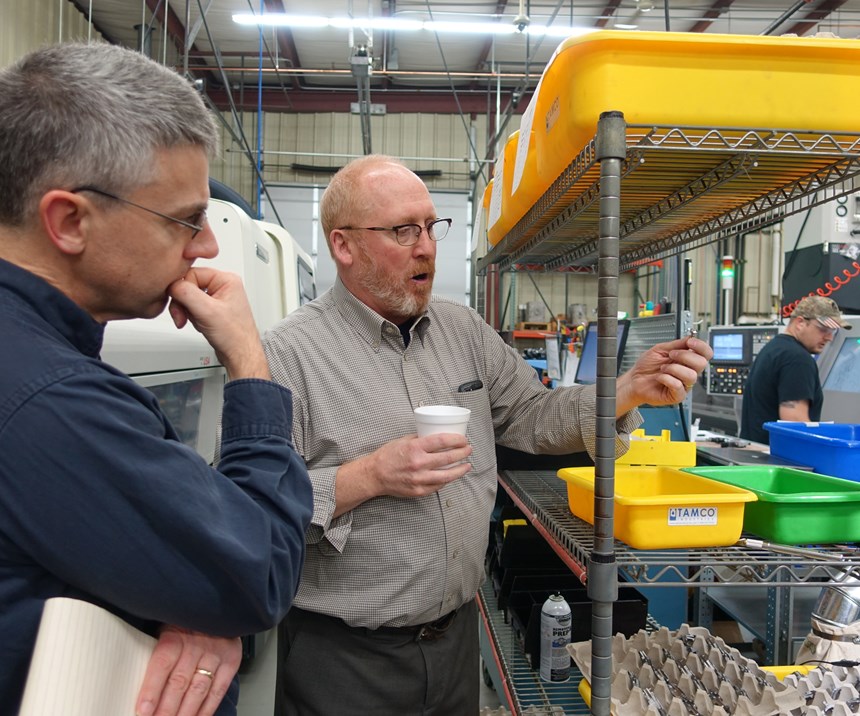
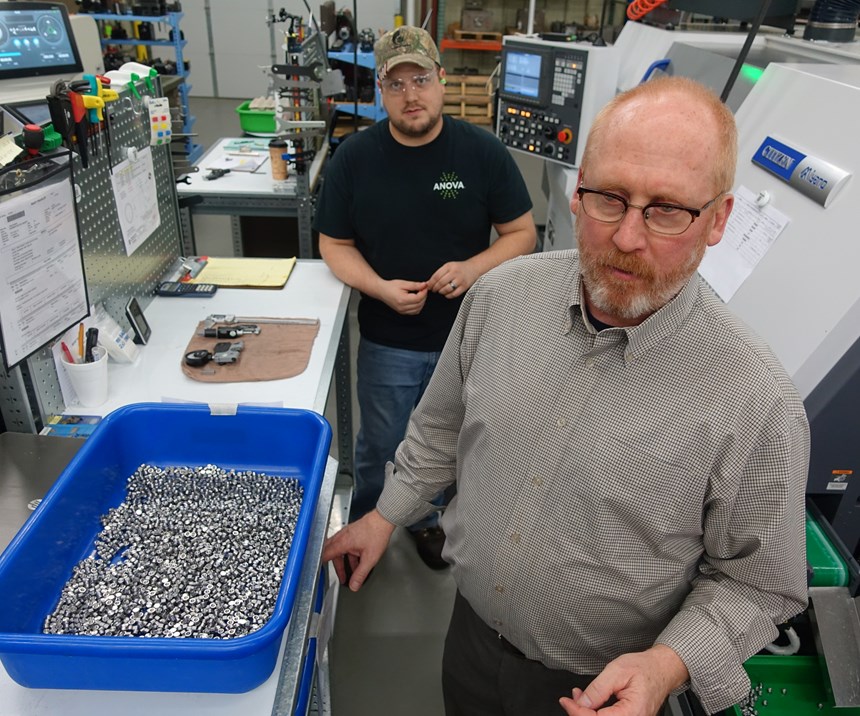
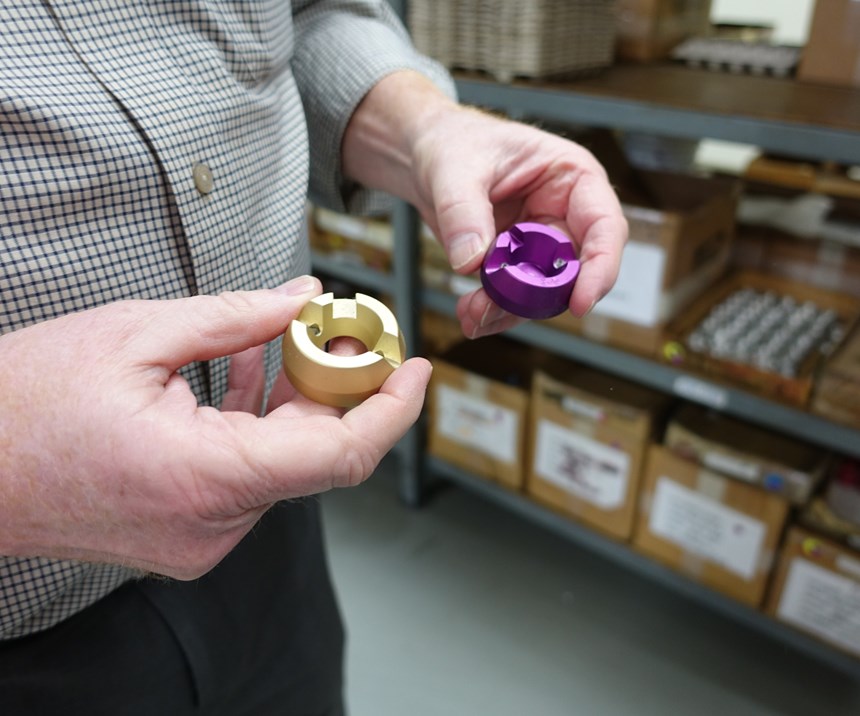



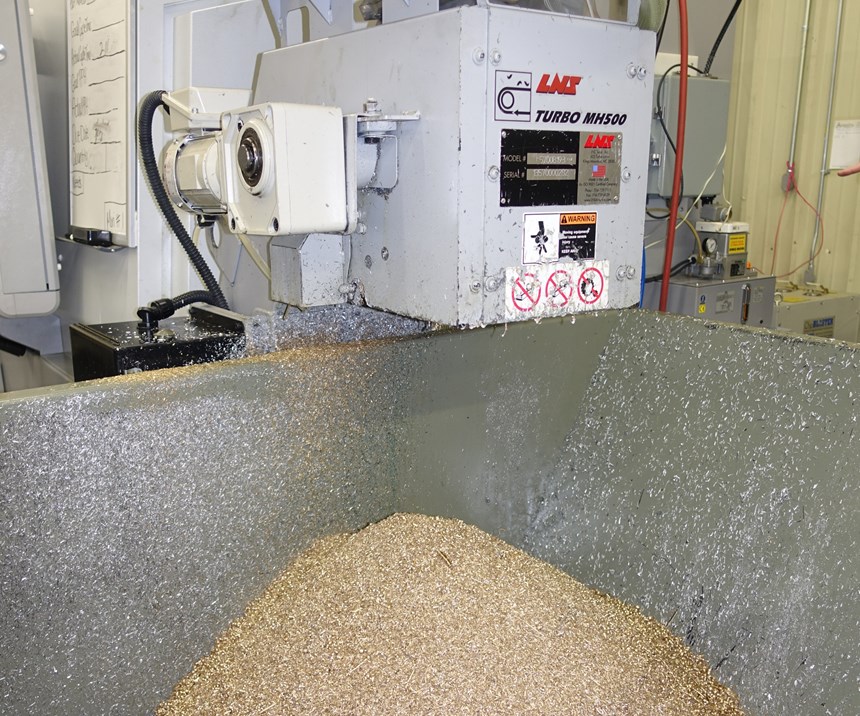
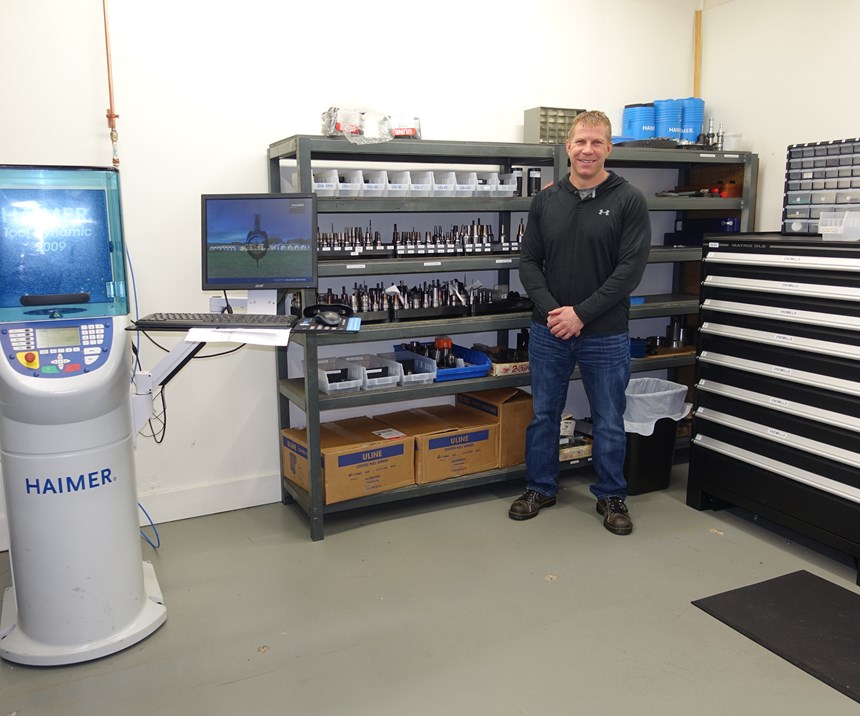










.png;maxWidth=300;quality=90)











